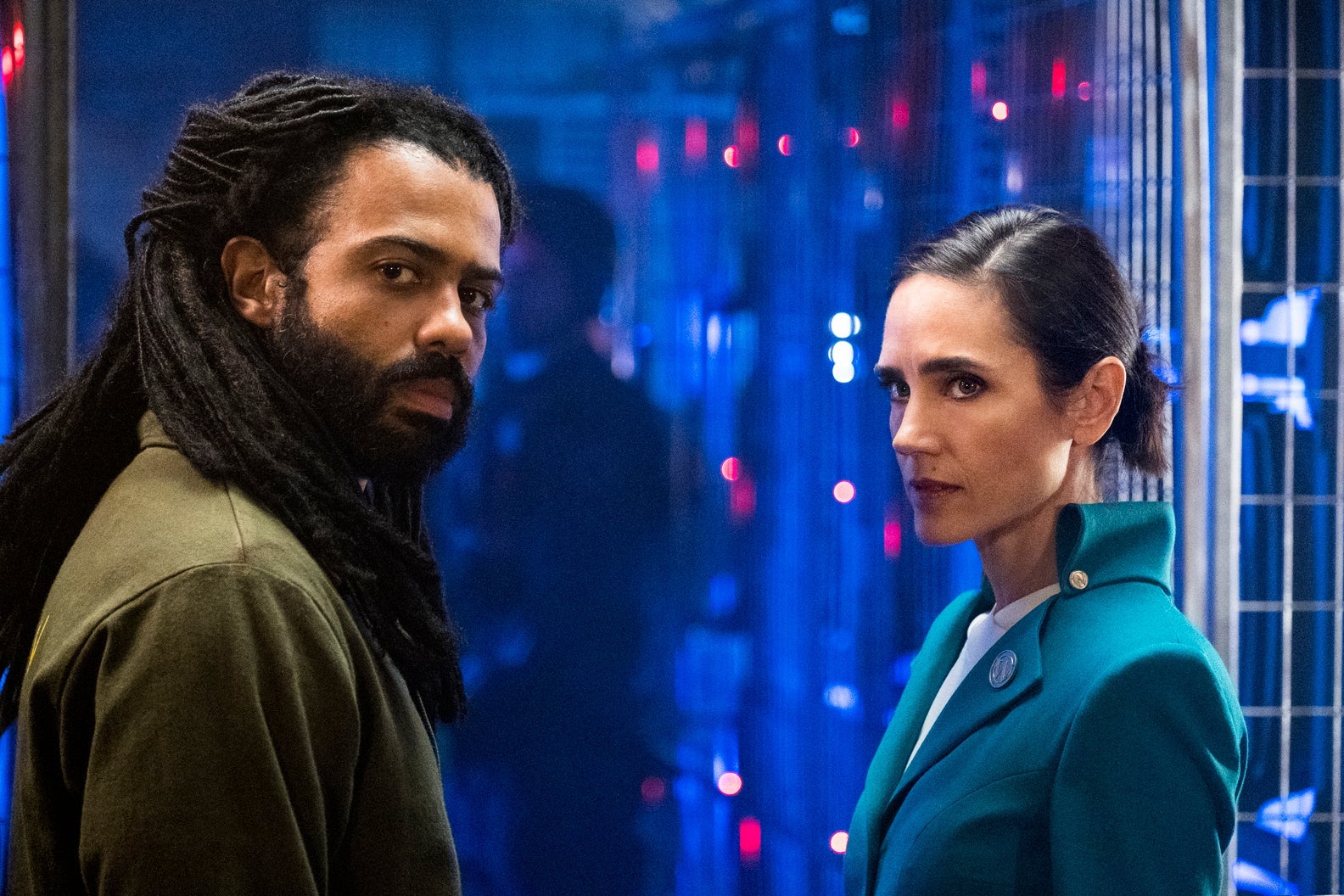It’s hard to imagine a better moment in world history to release a television show about people forcibly confined to tight quarters during an apocalypse caused by careless plutocrats who use brutal methods to ensure their own lives of idle luxury will continue uninterrupted while the less fortunate suffer and die. But although Snowpiercer couldn’t be more timely, somehow TBS’s new show about the last survivors of a climate collapse eternally circling the frozen Earth on a rigidly stratified supertrain—1,001 cars long, as the show reminds us 1,001 times—doesn’t even get out of the station before it goes off the rails.
Part of that can probably be attributed to Snowpiercer’s troubled production history: Original showrunner Josh Friedman (Terminator: The Sarah Connor Chronicles) left the series over creative differences with the network and was replaced by Graeme Manson (Orphan Black); Scott Derrickson (Doctor Strange), who directed the original pilot, also clashed with the network and refused to do reshoots (he was replaced by James Hawes, of Doctor Who); and, speaking of networks, WarnerMedia ping-ponged Snowpiercer from TNT to TBS and then back again, which must have been a real treat for everyone involved.
The larger problem is structural, and maybe insurmountable. The newest Snowpiercer is based on both the 2013 feature film from director Bong Joon-ho and the original series of French graphic novels by Jacques Lob, Jean-Marc Rochette, and Benjamin Legrand, the first of which was published in 1982. All three works have the same bleak premise—the planet has frozen and the only survivors are the passengers on a self-sustaining luxury train built to withstand the extreme cold—and all three use the class divide between the first class passengers and the stowaways at the rear of the train as a plot engine.
But the only version of Snowpiercer that succeeds is Bong Joon-ho’s, and the reason is simple: Bong and his co-screenwriter Kelly Masterson took the graphic novels and pared them down into a quick-moving fable that keeps its perspective tightly focused on a group of insurrectionists in the tail of the train. The audience learns more about the train only as the protagonists do, and their war party’s bloody voyage toward the engine doesn’t leave much time to think about Snowpiercer as anything more than a brutally simple metaphor for life under capitalism. It’s a battleground, not a society. TNT’s Snowpiercer, with more hours to fill, has to look more closely at the train and the people on it, and they can’t really stand up to the scrutiny.
Those people include Hamilton’s Daveed Diggs as a former homicide detective living in the tail, and Jennifer Connelly at her most austere as the train’s head of hospitality and spokesperson for its mysterious designer, Mr. Wilford. The standout performance comes from The Americans’ Alison Wright as Connelly’s second in command—she does a nice riff on Tilda Swinton’s gonzo performance from the film—but in general, the quality of the writing and acting are very basic cable, even for basic cable. Each episode opens with a voice-over from one member of the cast explaining their philosophy and their place on the train, and they’re uniformly cringeworthy: “I mistook my ticket to survival for freedom, but justice never boarded, and Wilford doubled down, with a jackboot on our throats and a fat finger on the scales,” one character observes.
Still, the issue isn’t just individual lines or their delivery, because the plot doesn’t work either. The first half of the season is a half-assed detective story in which Diggs is called up from the tail to hunt a serial killer preying on third-class passengers, and the mystery is quickly abandoned in favor of the revolution Snowpiercer’s premise demands. That plotline, too, is more complicated than the film’s version in ways that don’t improve things, as Diggs and Connolly struggle for control of the train’s competing factions. You can’t really fit much political analysis into a setting designed for ax fights, and why would you try?
At least once the ax fights get started—and they do—Snowpiercer has its charms. The cinematography is crisp and cool, and although the sets aren’t quite as striking as the begrimed art deco look from the film, there’s more than enough exposed wood and gold trim to go around. The subplots eventually settle down (primarily because of the exceptionally high mortality rate), and the last two episodes have enough twists and turns to nearly overshadow the dialogue. So is it worth the eight hours or so it takes to get to the front of Snowpiercer’s train? That all depends: Are you stuck in one place with nowhere to go, no signs of life outside, and a whole lot of time to kill?
